On June 3-15, 2019 a group of lifelong learners joined the Hope College Global Travel Program and professor emeritus Donald Luidens on a journey to Eastern Europe. Dr. Luidens reflects on their adventure…
The 2019 Hope College summer expedition to Eastern Europe, entitled “Discovering the Balkans: From the Black Sea to Budapest,” provided a wonderful opportunity for eight friends and alumni of Hope College to sail up the Danube from its mouth in the Black Sea to its midpoint in Hungary. It was a treasured excursion, punctuate by feathered wildlife, gorgeous vistas, crumbling castles, picturesque villages, and modern urban sprawls. It provided a tantalizing narrative of centuries of turbulent history and a grim reminder of the legacy of Soviet domination of these countries during the twentieth century. In all, an unforgettable experience.

We gathered in early June in Bucharest, the capital of a slowly modernizing Romania, hundreds of years old, but barely a babe in the contemporary era. The capital is dominated by the Soviet-era architecture – gargantuan in scale, and inevitably box-like in form – which was favored by Communist architects and the former dictator, Nicolae Ceausescu. No building more fully embodies this Orwellian period than the ornate and stolid parliament building, begun during the dictator’s reign and completed after his death. Constructed at the cost of razing hundreds of historic homes and other edifices, this structure became a symbol for us of the price that Romania has paid for the post WWII Soviet-dominated years.
Romanians have begun the laborious process of reclaiming their history, including their Orthodox Christian roots. Churches long in disrepair are being revived and have become wondrous tourist destinations as well as places of worship.
Following a brief sojourn in Bucharest, we headed south to the Danube and a sleepy fishing town called Fetesti. There we boarded our floating home for the next ten days, the sleek river cruiser, Avalon Passion. No one ever explained the name of this worthy vessel, but it certainly proved to be a pleasant and comfortable place to bunk on our trip. Not to mention the food, which was rich in its variety, calories, and appeal. Breakfast, lunch, and dinner were definitely passion-inducing.
Initially, we turned east and headed to “Point Zero,” the opening of the Danube into the Black Sea. Disagreements about the source of the Danube in the mountains of Bavaria meant that its length has historically been counted from its undisputed endpoint at the Sea. Here a UNESCO World Heritage protected delta is the home to hundreds of thousands of migrating birds. While we were too early to enjoy their presence in such numbers, we were treated to many varieties of storks, cranes, and sea gulls. And foliage that came down to the river’s edge in profuse rolls of green and gray. Moses could have hidden a lifetime in the bulrushes!
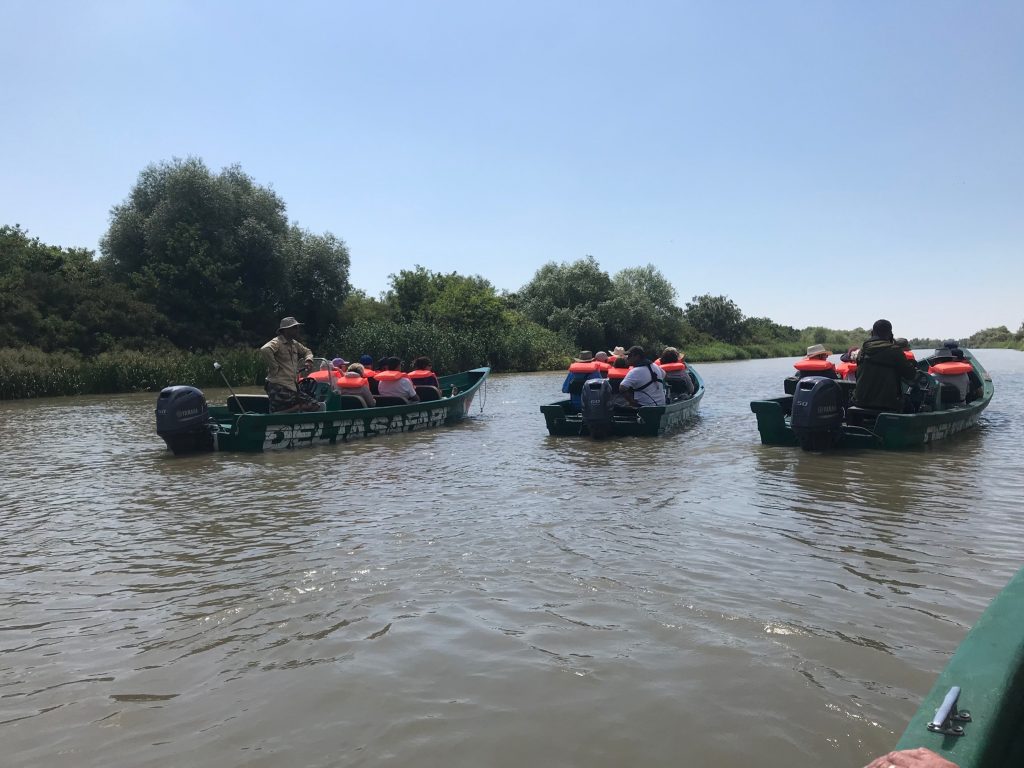
While at the mouth of the Danube, we visited a small fishing village, St. Gheorghe, notable because of its Ukranian Orthodox history. Its first inhabitants were refugees from a sixteenth century pogrom in their home country. Secluded and safe in this hinterland, they developed a thriving business catching beluga fish and selling the roe, the world’s recognized premier caviar. However, years of overfishing and growing competition from elsewhere, has left this community struggling to survive on the edge of the Danube.
Turning back west, we were treated to endless miles of unbroken farmland and low-hanging shrubs. It was gloriously relaxing. Happily, the weather cooperated throughout the trip, so that we spent countless hours on deck watching the landscape swirl by. Evenings were particularly evocative, as the sunsets quieted our chatter and drew our sense of awe.
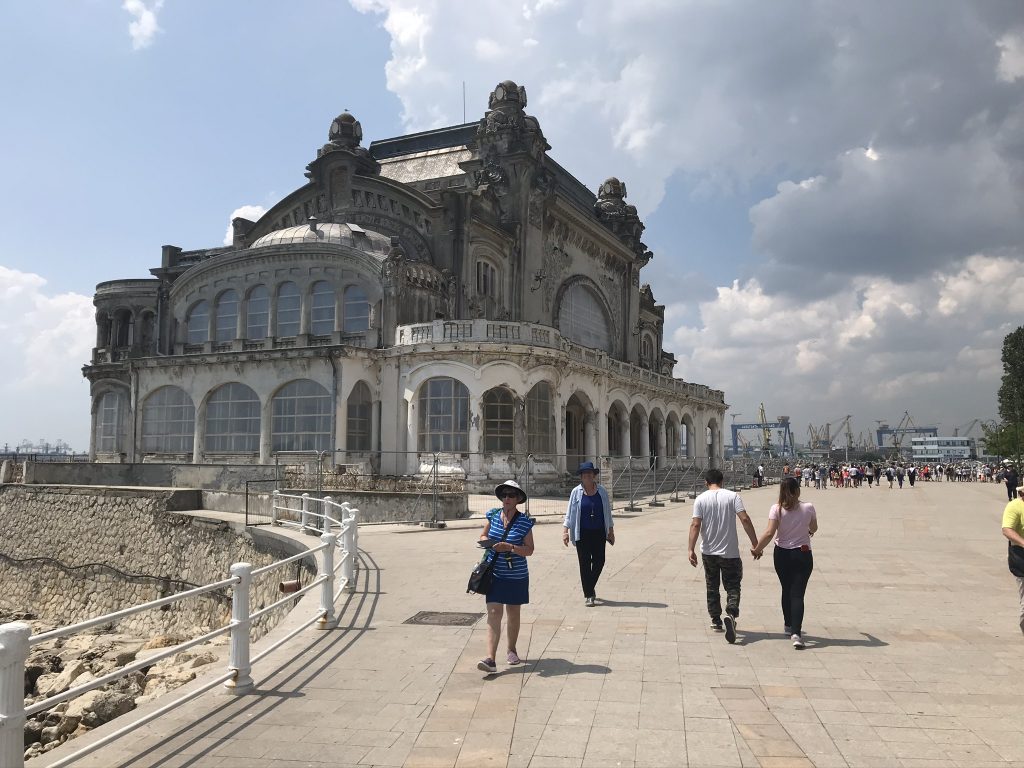
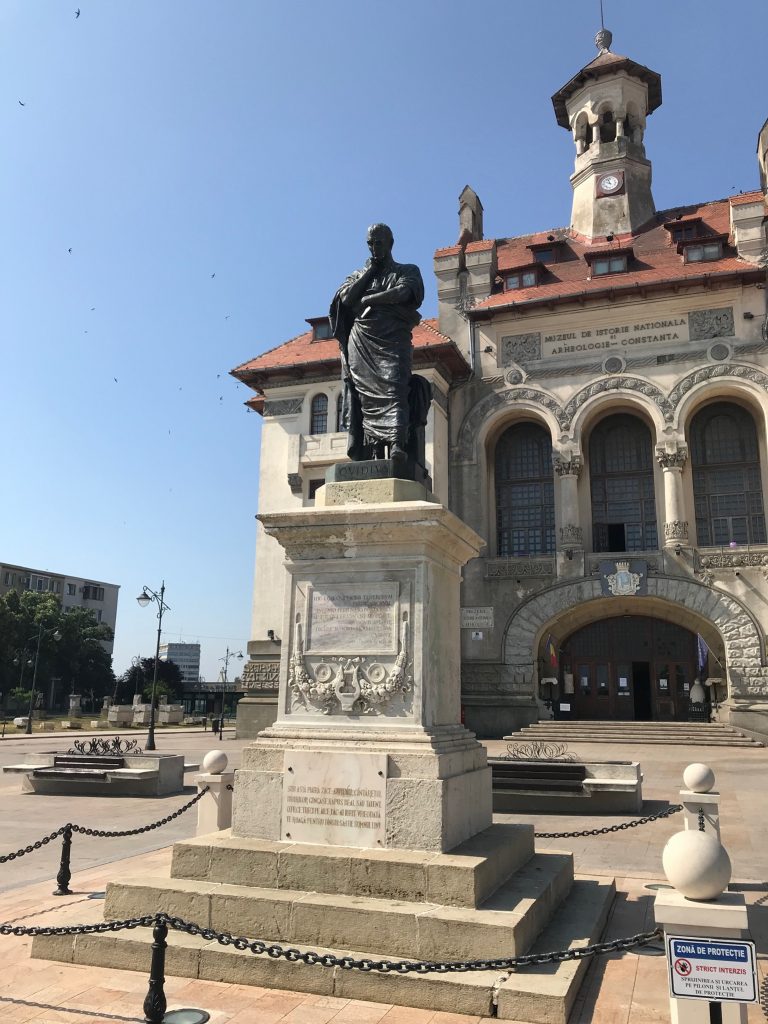
Towns and villages popped up from time to time, but the overwhelming sense of greenery soothed us every day. On a regular basis we stopped to visit local historical and cultural sites. A nineteenth century folly, a seaside casino envisioned by one potentate to draw the masses, has been a derelict for decades. Local businesses are working to revive it to its Gothic glory. Discussions of a new Monaco on the shores of the Black Sea swirl in the local conversation. The remoteness of Romania, distant from Rome even in ancient days, provided a home in exile for the unrivalled storyteller, Ovid. His residence is commemorated in Constanta with a town center statue and museum.
The centuries-long rule of the Ottomans is everywhere evident in these once-Moslem controlled provinces. Mosques punctuate the skyline and stand, cheek-by-jowl, with Crusader-era churches and castles.
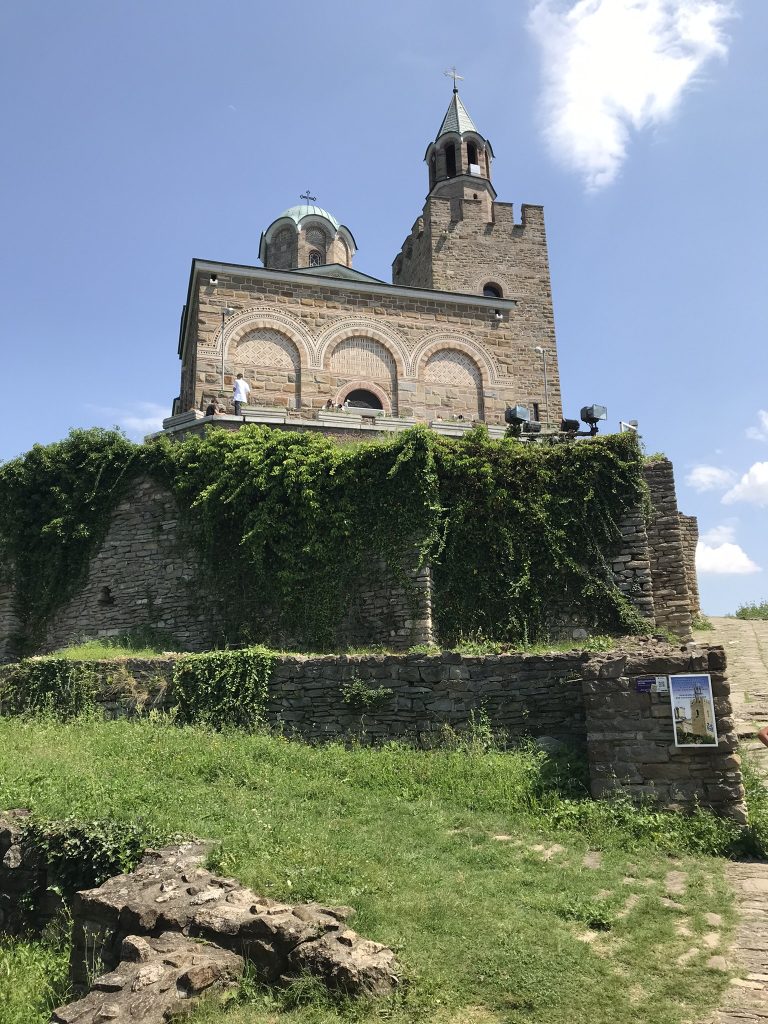
Indeed, forts, castles and strongholds recall the millennia of wars fought over this strategic region along the main waterway in Eastern Europe. Occupiers from the Greeks through the Soviets have left their trail. We had occasion to walk the battlements of several ancient citadels, positioned as they were on the banks of the Danube to regulate and protect the inhabitants and their farmlands.
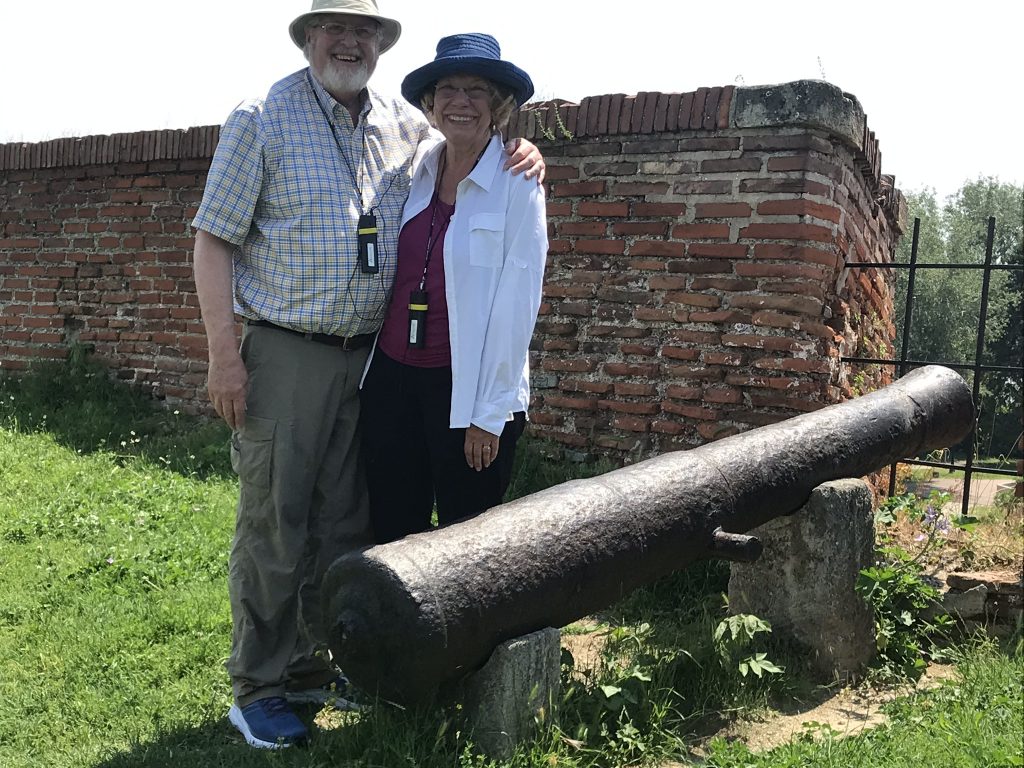
Without doubt, the most awesome of these castles was embedded in and around a natural outcropping high in the mountains near Belogradchik, Bulgaria. Some of our participants followed the guide up the long climb to the mountain aerie, while others agreed to stay behind and take pictures. A truly memorable site and sight, indeed!
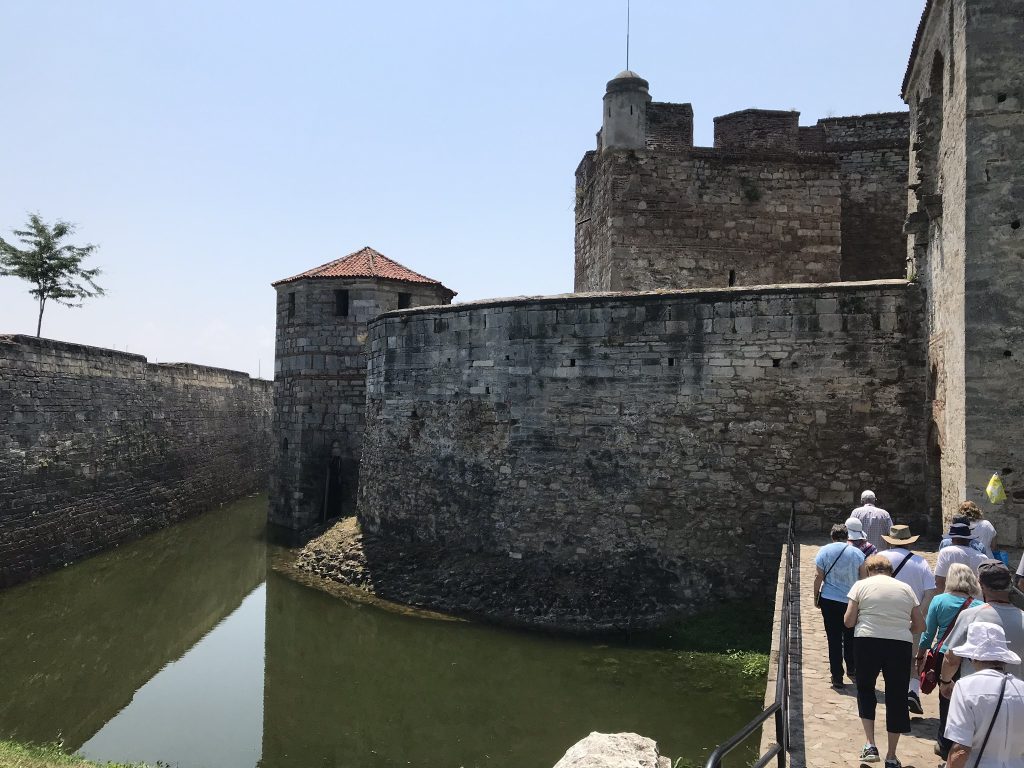
While the western length of the Danube is enveloped by many Alpine foothills, the eastern segment is mostly lowland and agricultural. As a result, there are few extravagant vistas on this lower end. The most remarkable is known as the “Iron Gates,” a section of the Danube where mountain ranges from both the Romanian and Serbian sides come together in rolling profusion. On the side of one hillock is a carving of a past warlord, stately and bushy-bearded and imposing. He serves as the gatekeeper of the Iron Gates, a lone, gnarled sentry overseeing the river traffic. Not far from this ancient carving is a modern gatekeeper to the Danube, a two-tiered dam that was constructed under the joint administrations of Yugoslavian President Josip Tito and Romanian President Ceausescu. The dam has created a large lake that provides hydroelectric power for wide swaths of the two countries. It was an engineering wonder to ride the massive locks as they shunted multiple vessels up and down the river.
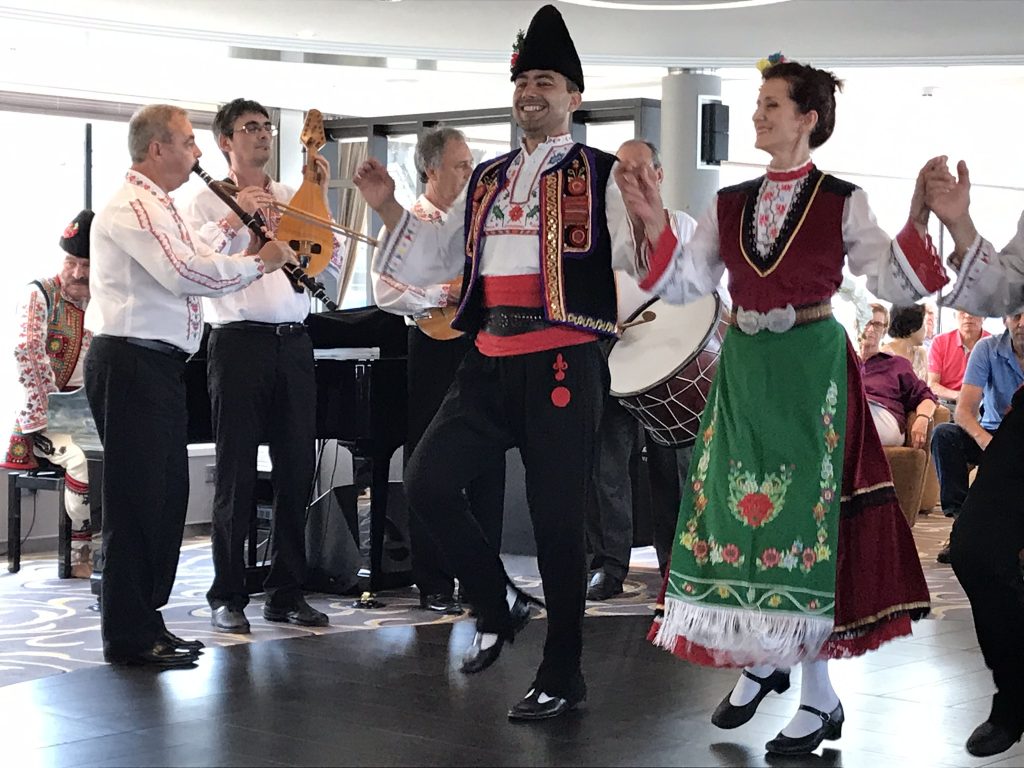
Punctuating our river cruise were a series of lectures on regional history (the resident tour guides were all superb amateur historians and helped us understand the long- and short-term narratives of their beloved countries) as well as periodic folk performances. On one such occasion, Bulgarian dancers and instrumentalists joined us on deck for a rousing spectacle.

Everywhere signs of the Soviet era were apparent. Sometimes in the form of state buildings (like the Romanian Parliament), but more often in small towns and struggling villages where the archetypal box-like apartments and factories were dropped into the midst of traditional communities, scarring them four decades after “independence.” The most dissonant ones appeared in beautiful mountain hamlets where gargantuan factories were imposed on rural or resort-like backgrounds.
In keeping with Marxist ideology, the true proletariat was assumed to be an enlightened industrial laborer. With this model in mind, the Soviets and their Eastern European allies worked mightily throughout much of the twentieth century to turn rural farming communities into true workers’ paradises. In the process, six- and eight-acre peasant farms were collectivized and became government-run agribusinesses. Their former landowners were marshalled to the cities and towns in order to work in the state-run factories. These factories were supplied, at largely discounted rates, with raw materials from the Soviet Union, and the markets for their products (from shoes to washing machines and cars) were Soviet Bloc consumers. This tight-knit, circular market kept the Eastern European economies alive (if not humming) during the post-World War II years. When the Soviet Union collapsed, so did this tight-knit system. Artificially cheap raw material no longer flowed into the countries, so most factories ground to a halt. When they were able to produce their former goods, these countries found themselves competing against much better, more mechanically produced, more widely-marketed goods from the rest of Europe and the global marketplace. Inevitably, they were – and remain – at a significant disadvantage in that rough and tumble commercial environment.
To complicate matters, when the new regimes took office, they tried to rectify the “land reform” policies of the Communists and offered to return stolen farms to the descendants of their former owners. However, for many, this was an impossible opportunity; they had spent two or three generations in the cities and villages and had no interest in returning to their ancestral lands. So now those same mammoth farms, which were once harvested by collective effort, were sold to the highest bidders and are now owned by agribusiness corporations or wealthy landowners. Inevitably, these painful realities sparked many discussions with our guides. Nevertheless, they all saw a better day dawning.
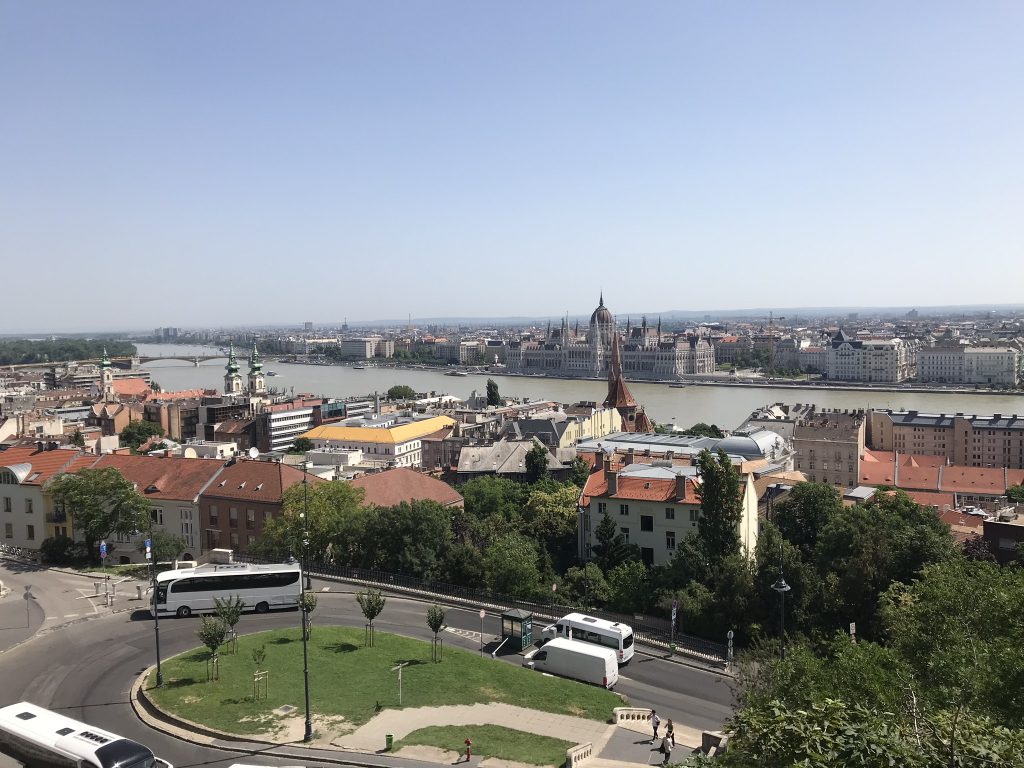
The future for Romania, Bulgaria, and Serbia may be on display in Hungary, with its exploding cities and Western European focus. Our last stop was in the bustling metropolis of Budapest. The sister cities of Buda (on the hills to the west of the Danube) and Pest (on the flatlands to the east), were joined together in 1873 at the height of the Austro-Hungarian Empire. Budapest retains its Imperial mantle, self-consciously the European-Asian linchpin in geopolitical and cultural transactions. Hotels, skyscrapers, and cathedrals have been refurbished and modernized, thrusting up throughout the city in regal fashion.
Two stops on our tour of Budapest stand out as most memorable. A visit to the Opera House was much anticipated, and we were disappointed that the main theater was undergoing extensive repairs. However, to compensate, the opera company had arranged for a tenor and a soprano to provide us with an impromptu concert! While we sat on the main staircase to the auditorium, they entertained us with lucious arias and lilting duets. The accoustics in this elegant staircase could not have been surpassed in a more formal setting. It was divine!
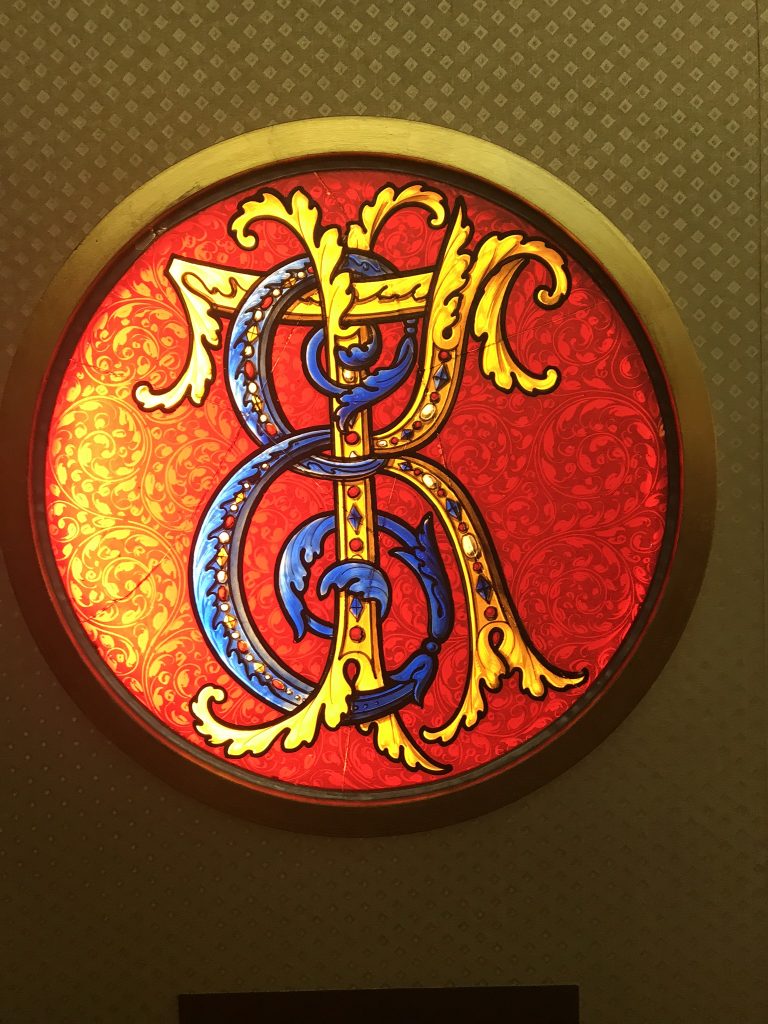
The second stop was equally moving. It was to the studio-home of stain-glass artist Roth Miksh, a Jewish artisan who reached international fame at the beginning of the twentieth century, but whose art fell out of repute with the arrival of the Nazis. Miksh was a contemporary of Tiffany (with whom he was often in competition for international recognition). His home/ studio has been transformed into a magical museum. His heirs have retrieved many of his works from owners around the world, and these are on extensive display throughout. While some of the works are classical in their form, reflecting medieval church windows, others are striking in their modernity. When we stepped into this unprepossessing home, none of us could anticipate the affecting art that was housed therein.
Another indelible highlight of the Danube excursion was the incomparable cuisine. From the start, we found the food to be outstanding – whether on the Avalon Passion or in local eateries. We sampled widely and found few offerings to be wanting. While it may not be the sole reason to take a trip such as this one was, it certainly is a strong recommender.
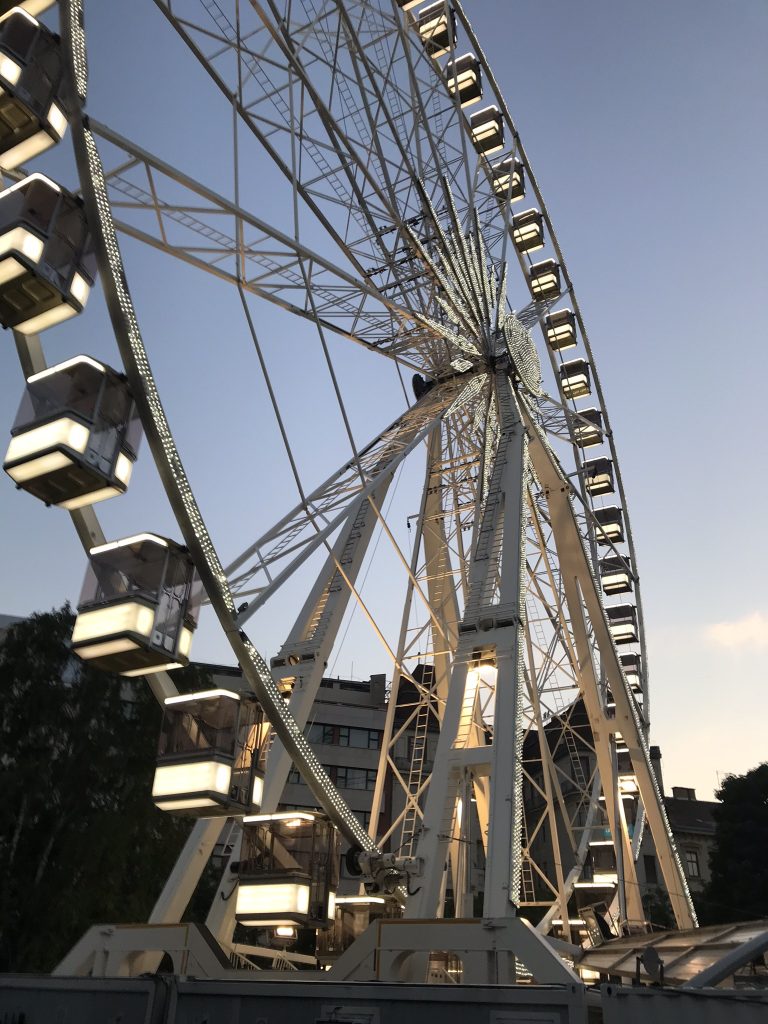
Our final evening in Budapest provided us with a cherished opportunity. Near our hotel was a grand ferris wheel which lofted us ten stories into the sky, well over the tops of neighboring apartments and hotels. It provided a grand panorama as we made our way to its apex. The city of Budapest lay out beneath us in royal splendor as its nightlights began to glow. In the distance, the Danube curled through the twin cities, reminding us of the matchless journey that lay behind us and that beckons future adventurers.
To participate in your own global travel adventure with Hope College, visit hope.edu/globaltravel.


